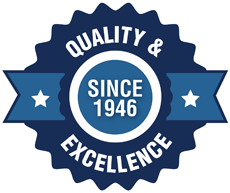
When you turn on the tap, you expect clean, safe water for your family. But in towns like Hamilton and Stevensville, Montana, there are silent threats lurking within your water supply. Understanding the risks and taking action is essential to protecting your household.
What is Lead, and How Does it Get into My Water?
Lead is a toxic metal that has no place in drinking water. However, in older homes and buildings, lead pipes, fixtures, or solder may still exist. When water flows through these materials, especially when it’s warm or sits for long periods, lead particles can leach into the water. This makes lead contamination a common concern in areas with older infrastructure, like Hamilton and Stevensville.
Lead Levels in Hamilton and Stevensville, Montana Water: Why You Should Be Concerned
Montana has a history of lead contamination in its water systems, particularly in older communities. The Environmental Protection Agency (EPA) has set strict limits for lead in drinking water, but even low levels of exposure can have serious health consequences.
Lead is harmful to everyone, but its effects are especially severe for children and pregnant women. Even small amounts of lead in water can accumulate in the body over time, so addressing the issue promptly is critical.
- Town of Stevensville Water Division provides information on the Town of Stevensville’s water system, including any potential lead contamination issues and how they are being addressed.
- The City of Hamilton news detail, though the specific content is not available here, might be relevant to lead contamination in Hamilton’s water system. You can visit this link to learn more.
How to Know If Your Water Contains Lead
Lead has no taste, color, or odor, making it impossible to detect without proper testing. Consider these signs that testing may be necessary:
- Your Home’s Age: Homes built before 1986 are more likely to have lead pipes or plumbing
- Changes in Water Quality: If your water appears cloudy, discolored, or leaves a metallic taste, it’s worth testing for lead and other contaminants.
- City Notifications: Residents in Hamilton and Stevensville should pay attention to local water quality updates or service line replacement notices.
To ensure the safety of your family, consider having your water tested for lead by Clearwater Systems. They offer reliable water testing services to help you determine the lead levels in your drinking water.
What You Can Do to Protect Your Family From Lead in Water
Protecting your family from lead in water starts with taking action. Here are four ways you can do that:
- Test Your Water: The first step is to test your water for lead. Clearwater Systems offers advanced water testing that will help determine if your water contains lead.
- Use Certified Water Filters: Use a filter that is specifically certified to remove lead such as the Kinetico MACguard® filter.
- Install a Reverse Osmosis System: A reverse osmosis system is a highly effective way to remove lead and other contaminants. These systems are a worthwhile investment for families with ongoing concerns about water quality. Learn more about the Kinetico K5 Drinking Water Station® here.
- Flush Your Pipes: Run cold water for several minutes before drinking or cooking, especially if the water has been sitting unused.
Why Testing Your Water is Important
Testing your water is the first step to knowing if it’s safe. Regular testing gives you peace of mind and helps you catch any problems early. If you live in Hamilton or Stevensville, testing is especially important because some homes in the area have older plumbing that could contain lead.
How Clearwater Systems Can Help
At Clearwater Systems, we understand the importance of clean, safe drinking water for your family. With decades of experience in water treatment, we provide solutions tailored to address concerns like lead contamination. Our Kinetico K5 Drinking Water Station is equipped to remove harmful substances, ensuring that every drop you drink is safe and clean.
Take Action Today
If you live in Hamilton or Stevensville and have received a notice about your service line, now is the time to act. Protecting your household from lead exposure doesn’t have to be overwhelming. By taking simple steps and utilizing resources from your local city and Clearwater Systems, you can ensure your family’s safety and well-being.



